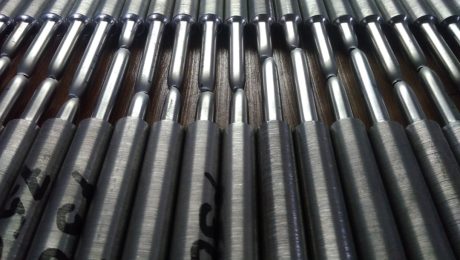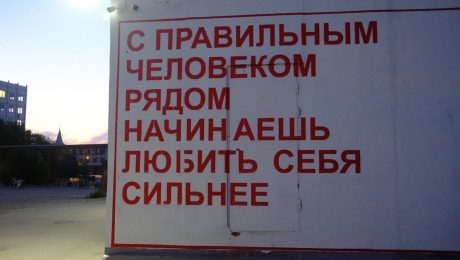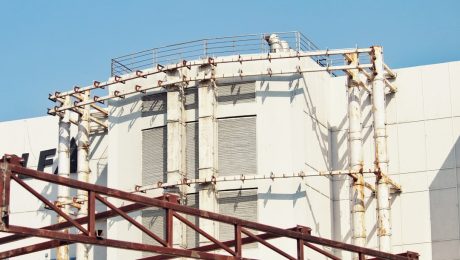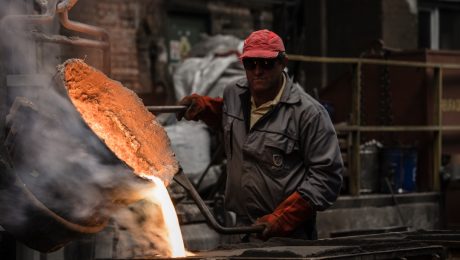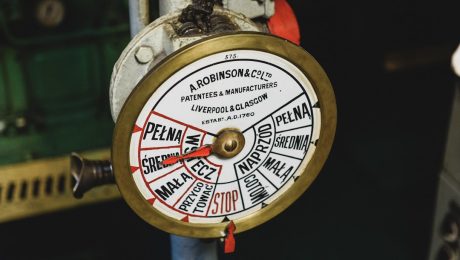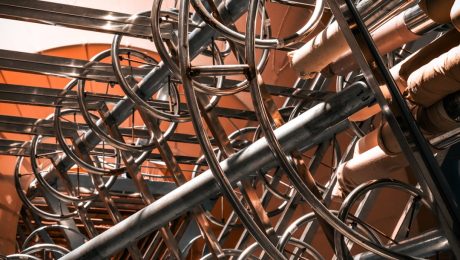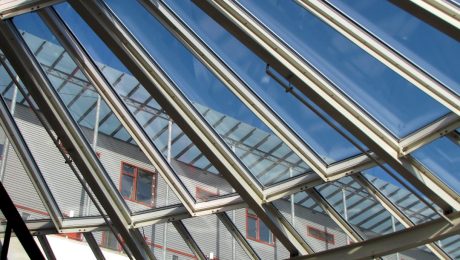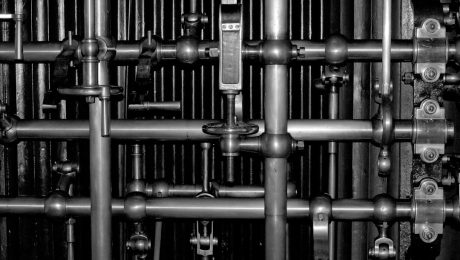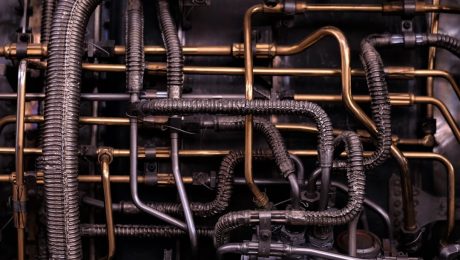Industrial pipes are the unsung heroes of manufacturing, silently transporting vital fluids and gases that keep production lines running. Choosing the right pipes is critical for efficiency, safety, and the longevity of your operations. This comprehensive guide explores the essential aspects of selecting and managing industrial pipes in a manufacturing environment.
1. Material Matters: Selecting the Right Industrial Pipe Material
The choice of pipe material is paramount and depends heavily on the substance being transported. Different materials offer varying levels of corrosion resistance, pressure tolerance, temperature resistance, and cost-effectiveness. Let’s explore some common choices:
- Carbon Steel: A workhorse in many industries, carbon steel pipes are strong, durable, and relatively inexpensive. However, they are susceptible to corrosion, particularly in environments with moisture or chemicals. Protective coatings like zinc galvanization or epoxy linings are often necessary.
- Stainless Steel: Offering superior corrosion resistance compared to carbon steel, stainless steel pipes are ideal for handling aggressive chemicals, high-purity fluids, and in demanding environments. Different grades of stainless steel (e.g., 304, 316) offer varying levels of corrosion resistance and are selected based on specific application needs.
- Plastic Pipes (PVC, CPVC, HDPE): Lightweight and corrosion-resistant, plastic pipes are suitable for applications involving chemicals that would corrode metal pipes. However, they have lower temperature and pressure tolerances compared to metal pipes and may not be suitable for high-temperature or high-pressure systems.
- Copper Pipes: Excellent for potable water and other low-pressure applications, copper pipes offer good corrosion resistance and are relatively easy to install. However, they can be more expensive than other options.
Careful consideration of the transported fluid’s properties, temperature, pressure, and the surrounding environment is crucial for selecting the appropriate pipe material.
2. Applications Across Industries: Where Industrial Pipes Shine
Industrial pipes find applications in a vast array of manufacturing sectors. Their role is crucial in:
- Chemical Processing: Transporting corrosive chemicals and solvents necessitates robust and corrosion-resistant pipes, often stainless steel or specialized plastic pipes.
- Oil and Gas: High-pressure and high-temperature applications require pipes capable of withstanding extreme conditions. Often, specialized steel alloys are employed.
- Pharmaceutical Manufacturing: Maintaining sterility and preventing contamination is paramount. Stainless steel pipes with electropolished surfaces are frequently used.
- Food and Beverage Processing: Sanitary standards are crucial. Stainless steel pipes are preferred due to their ease of cleaning and resistance to bacterial growth.
- Power Generation: Pipes transport steam, water, and other fluids within power plants, requiring materials capable of handling high temperatures and pressures.
The specific requirements for pipe materials, dimensions, and fittings vary significantly across these industries.
3. Safety First: Ensuring Safe Operation and Maintenance of Industrial Pipes
Safety is paramount when dealing with industrial pipes, especially those carrying hazardous materials. Regular inspections, proper installation, and adherence to safety regulations are crucial. Key safety considerations include:
- Pressure Testing: New pipes and existing systems should undergo pressure testing to identify weaknesses and leaks before operation.
- Corrosion Monitoring: Regular inspections and non-destructive testing can help detect corrosion early, preventing catastrophic failures.
- Proper Installation: Correct installation techniques, including proper support and anchoring, are essential for preventing leaks and structural damage.
- Emergency Shutdown Procedures: Clear and easily accessible emergency shutdown procedures are crucial in case of leaks or other emergencies.
- Personal Protective Equipment (PPE): Workers handling industrial pipes should always wear appropriate PPE, including safety glasses, gloves, and protective clothing.
Investing in safety measures is not just a cost; it’s an investment in the protection of personnel and the prevention of costly downtime.
4. Maintenance and Repair: Extending the Lifespan of Your Industrial Pipes
Regular maintenance extends the lifespan of industrial pipes and minimizes the risk of failures. A proactive maintenance program should include:
- Visual Inspections: Regular visual inspections can detect corrosion, leaks, and other damage.
- Cleaning and Flushing: Regular cleaning and flushing can remove debris and prevent blockages.
- Leak Detection and Repair: Prompt detection and repair of leaks are crucial to prevent further damage and environmental contamination.
- Corrosion Prevention: Applying protective coatings or using corrosion inhibitors can significantly extend the lifespan of pipes.
- Scheduled Replacements: Even with proper maintenance, pipes eventually need replacement. Developing a planned replacement schedule helps prevent unexpected failures.
A well-defined maintenance plan is crucial for optimizing operational efficiency and minimizing downtime.
5. Selection Criteria: A Step-by-Step Guide to Choosing the Right Industrial Pipes
Selecting the correct industrial pipes involves a systematic approach considering several factors:
- Fluid Properties: Determine the properties of the fluid being transported (e.g., corrosivity, temperature, viscosity).
- Operating Conditions: Consider the operating pressure, temperature, and flow rate.
- Environmental Factors: Account for the surrounding environment (e.g., exposure to weather, soil conditions).
- Budget Constraints: Balance the cost of different pipe materials and installation with long-term operational costs.
- Safety Regulations: Ensure compliance with all relevant safety regulations and standards.
- Maintenance Requirements: Consider the ease of maintenance and repair for the chosen pipe material.
By carefully considering these factors, you can select the most suitable industrial pipes for your specific manufacturing needs, ensuring optimal performance, safety, and longevity.
Conclusion: The selection and maintenance of industrial pipes are critical aspects of any manufacturing operation. By understanding the various materials, applications, safety considerations, and maintenance requirements, manufacturers can make informed decisions that contribute to efficient, safe, and cost-effective production.
Tags: Industrial Pipes, Manufacturing Pipes, Pipe Materials, Industrial Pipe Selection, Pipe Maintenance
In today’s interconnected digital world, APIs, or Application Programming Interfaces, are the unsung heroes powering countless applications and services. From checking the weather on your phone to making online purchases, APIs silently orchestrate the seamless flow of data between different systems. This comprehensive guide will demystify APIs, exploring their functionality, types, benefits, and crucial considerations for developers and businesses alike.
What Exactly is an API?
At its core, an API is a set of rules and specifications that software programs can follow to communicate with each other. Imagine it as a waiter in a restaurant. You (the application) place your order (request) with the waiter. The waiter (API) takes your order to the kitchen (database or service), retrieves your meal (data), and brings it back to you. This communication happens without you needing to understand the complex inner workings of the kitchen. APIs abstract away the complexities, providing a simplified interface for interaction.
APIs utilize various protocols and formats like HTTP, JSON, and XML to exchange data. The specific details of the communication, including the data structure and request methods (GET, POST, PUT, DELETE), are defined in the API documentation. This documentation acts as a roadmap for developers, guiding them on how to interact with the API effectively.
Different Types of APIs: A Closer Look
While the fundamental concept remains the same, APIs come in various forms, each with its own strengths and weaknesses. Two of the most prevalent types are:
- REST (Representational State Transfer) APIs: These are the most common type, utilizing standard HTTP methods (GET, POST, PUT, DELETE) to interact with resources. They are stateless, meaning each request is independent of previous ones, making them highly scalable and reliable. REST APIs often use JSON or XML for data exchange.
- GraphQL APIs: GraphQL offers a more flexible and efficient alternative to REST. Instead of fetching multiple endpoints for different data pieces, GraphQL allows clients to request precisely the data they need in a single request, reducing over-fetching and improving performance. It’s particularly beneficial for complex applications with intricate data dependencies.
- SOAP (Simple Object Access Protocol) APIs: While less prevalent than REST, SOAP APIs are known for their robustness and security features. They often use XML for data exchange and rely on a more structured approach to communication.
The Benefits of Utilizing APIs
The integration of APIs offers numerous advantages for both developers and businesses:
- Enhanced Functionality: APIs allow developers to leverage existing services and functionalities without building everything from scratch. This significantly reduces development time and costs.
- Improved Efficiency: Automating tasks and data exchange through APIs streamlines workflows and improves overall efficiency.
- Increased Scalability: APIs facilitate the creation of scalable applications capable of handling increasing user loads and data volumes.
- Innovation and New Revenue Streams: Businesses can create new products and services by integrating their data and functionalities through APIs, opening up new revenue streams and partnerships.
- Data Integration: APIs enable seamless data exchange between different systems and platforms, improving data consistency and accessibility.
API Security: Protecting Your Data
API security is paramount. Exposing sensitive data through poorly secured APIs can lead to significant breaches and vulnerabilities. Key security considerations include:
- Authentication and Authorization: Implementing robust mechanisms to verify the identity of users and applications accessing the API is crucial.
- Input Validation: Thoroughly validating all incoming data to prevent injection attacks and other vulnerabilities.
- Rate Limiting: Restricting the number of requests from a single source to prevent denial-of-service attacks.
- Data Encryption: Encrypting data both in transit and at rest to protect sensitive information.
- Regular Security Audits: Conducting regular security assessments to identify and address potential vulnerabilities.
Real-World Examples of API Integrations
APIs are ubiquitous in the modern tech landscape. Here are a few examples:
- Social Media Logins: Many websites allow users to log in using their Facebook, Google, or Twitter accounts. This is facilitated by the respective social media platforms’ APIs.
- Mapping Services: Applications like ride-sharing services and navigation apps rely on mapping APIs (e.g., Google Maps API) to display maps, calculate routes, and provide location-based services.
- E-commerce Platforms: Online stores use payment gateway APIs to process transactions securely and shipping APIs to track shipments.
- Weather Applications: Weather apps retrieve real-time weather data from various weather APIs.
- Mobile App Development: Many mobile apps integrate various APIs to access data and functionalities from different services.
Understanding APIs is crucial for anyone involved in software development or digital business strategy. By mastering the concepts and best practices outlined in this guide, you can harness the power of APIs to build innovative applications, improve efficiency, and unlock new opportunities.
High-pressure systems, while essential in numerous industries, pose significant safety risks if not handled with meticulous care. From oil and gas pipelines to chemical processing plants and hydraulic presses, the potential for catastrophic failure is ever-present. This comprehensive guide delves into the critical safety considerations necessary to mitigate these risks and ensure a safe working environment.
1. Design and Engineering for Safety: Laying the Foundation
The foundation of a safe high-pressure system lies in its design and engineering. Careful consideration must be given to material selection, component integrity, and system redundancy. Materials must be chosen to withstand the expected pressures and temperatures, considering factors like corrosion resistance and fatigue strength. Finite element analysis (FEA) is often employed to simulate stress distributions and identify potential weak points. Redundancy, such as incorporating multiple safety valves or pressure relief devices, is crucial to prevent catastrophic failure in the event of a single component malfunction. Properly designed pressure gauges, pressure switches, and other monitoring devices are also essential for real-time system monitoring.
2. Operational Procedures: Maintaining Vigilance
Even the most meticulously designed system requires stringent operational procedures to maintain safety. Thorough training for all personnel involved in the operation, maintenance, and monitoring of the system is paramount. This training should encompass emergency response procedures, lockout/tagout protocols, and the proper use of personal protective equipment (PPE). Regular inspections and checks of pressure gauges, safety valves, and other critical components are essential. Operating procedures should clearly define acceptable pressure limits, temperature ranges, and flow rates. Deviation from these parameters should trigger immediate investigation and corrective action. Furthermore, detailed operating logs should be meticulously maintained to track system performance and identify potential issues early on.
3. Regular Maintenance and Inspection: Preventing Catastrophe
Preventive maintenance is crucial for ensuring the long-term safety of high-pressure systems. Regular inspections should include visual checks for leaks, corrosion, and damage, as well as functional tests of safety valves, pressure relief devices, and other critical components. A comprehensive maintenance schedule, tailored to the specific system and its operating conditions, should be developed and strictly adhered to. This schedule should include detailed procedures for component replacement, cleaning, and lubrication. Non-destructive testing (NDT) techniques, such as ultrasonic testing and radiographic inspection, may be employed to detect internal flaws and prevent unexpected failures. Accurate record-keeping of all maintenance activities is essential for tracking system performance and identifying potential trends.
4. Emergency Response and Procedures: Reacting to the Unexpected
Despite meticulous design, operation, and maintenance, unforeseen incidents can occur. Therefore, a well-defined emergency response plan is essential. This plan should clearly outline procedures for handling various scenarios, such as leaks, equipment failure, or fire. Emergency shut-down procedures should be clearly defined and regularly practiced through drills. Designated personnel should be trained in the use of emergency equipment, such as fire extinguishers, pressure relief valves, and isolation valves. Clear communication protocols should be established to ensure effective coordination during emergencies. Furthermore, emergency contact information for relevant authorities and emergency services should be readily accessible. Post-incident analysis is crucial to identify root causes and implement corrective actions to prevent future occurrences.
5. Regulatory Compliance and Best Practices: Adhering to Standards
Operating high-pressure systems necessitates strict adherence to relevant safety regulations and industry best practices. These regulations vary depending on the location and industry, but generally cover aspects such as design standards, operational procedures, maintenance requirements, and emergency response protocols. Staying informed about the latest regulations and best practices is critical to maintaining compliance and ensuring the safety of personnel and equipment. Regular audits and inspections by regulatory bodies are common, and any non-compliance can result in significant penalties. Proactive engagement with regulatory authorities and industry associations can help ensure that systems are designed, operated, and maintained according to the highest safety standards. Continuous improvement through the adoption of new technologies and best practices is essential for maintaining a safe and efficient operation.
Operating high-pressure systems demands a comprehensive approach to safety, encompassing meticulous design, stringent operational procedures, regular maintenance, effective emergency response, and unwavering adherence to regulations. By prioritizing safety at every stage, industries can minimize risks, protect personnel, and ensure the reliable operation of these crucial systems.
Tags: High-pressure safety, pressure system safety, industrial safety, process safety, safety regulations
The steel trade, a global industry involving massive transactions and complex logistics, relies heavily on robust payment mechanisms. Among these, the Letter of Credit (L/C) stands out as a crucial instrument for mitigating risk and ensuring secure transactions between buyers and sellers across international borders. This comprehensive guide delves into the intricacies of L/Cs in the steel trade, explaining their various aspects and offering valuable insights for both importers and exporters.
Understanding Letters of Credit (L/Cs) in the Steel Industry
A Letter of Credit (L/C), also known as a documentary credit, is a payment mechanism issued by a buyer’s bank (the issuing bank) promising to pay the seller (the beneficiary) upon presentation of specific, stipulated documents proving shipment and compliance with contract terms. In the steel trade, where transactions involve substantial sums and often cross geographical boundaries, L/Cs offer a vital layer of security. They reduce the risk for both parties: the seller is assured of payment provided they meet the conditions, while the buyer is protected against potential shipment delays or non-compliance with agreed specifications.
Different types of L/Cs exist, each tailored to specific needs. Irrevocable L/Cs, for instance, cannot be amended or cancelled without the consent of all parties, providing maximum security. Revocable L/Cs, on the other hand, offer less security as they can be amended or cancelled by the issuing bank at the buyer’s request. Confirmed L/Cs involve an additional bank (a confirming bank) guaranteeing payment, further strengthening the seller’s assurance.
Key Documents in a Steel Trade L/C Transaction
The success of an L/C transaction hinges on the precise and accurate presentation of required documents. These documents serve as irrefutable proof of compliance with the terms of sale and are meticulously scrutinized by the issuing bank. Common documents include:
- Commercial Invoice: A detailed invoice specifying the goods, quantities, prices, and payment terms.
- Packing List: A list detailing the contents of each package, crucial for verifying the shipment’s integrity.
- Bill of Lading (B/L): A document issued by the carrier acknowledging receipt of the goods and acting as proof of ownership and shipment.
- Certificate of Origin: A document certifying the country of origin of the goods, often required for customs clearance.
- Inspection Certificate: A report from an independent inspector verifying the quality and quantity of the steel products.
- Insurance Policy or Certificate: Proof that the goods are insured against loss or damage during transit.
Any discrepancies in these documents can delay or even prevent payment, highlighting the importance of meticulous preparation and adherence to the L/C’s stipulations.
Incoterms and Their Impact on L/C Transactions
Incoterms (International Commercial Terms) define the responsibilities of the buyer and seller regarding shipment, insurance, and risk transfer. The chosen Incoterm significantly influences the documentation required for an L/C. For example, under CIF (Cost, Insurance, and Freight), the seller is responsible for arranging shipment and insurance, while under FOB (Free On Board), the buyer takes responsibility for these aspects. The L/C must precisely reflect the agreed Incoterm to avoid complications during the payment process.
Choosing the right Incoterm is crucial for both parties and needs careful consideration based on factors like transportation methods, risk tolerance, and cost allocation. Mismatches between Incoterms and L/C stipulations can lead to disputes and payment delays.
Negotiating Favorable L/C Terms in Steel Trade
Negotiating favorable L/C terms is a critical skill for both buyers and sellers in the steel industry. Buyers aim for terms that protect their interests, such as clear specifications of quality and quantity, while sellers seek terms that guarantee timely payment and minimize their risks. Key aspects to negotiate include:
- Payment Schedule: Determining whether payment is made at sight (upon presentation of documents) or deferred (after a specified period).
- Document Requirements: Specifying precisely the documents needed to claim payment, avoiding ambiguities that could lead to delays.
- Partial Shipments: Agreeing on whether partial shipments are allowed and how they will be handled.
- Inspection and Testing: Defining the inspection process and the acceptance criteria for the steel products.
- Dispute Resolution Mechanism: Establishing a clear process for resolving any disagreements that may arise.
Effective communication and a thorough understanding of L/C mechanics are essential for successful negotiations.
Risks and Mitigation Strategies in L/C Transactions
While L/Cs offer significant protection, certain risks still exist. These include:
- Documentary Discrepancies: Minor inconsistencies in the presented documents can lead to delays or rejection of the payment claim.
- Fraudulent Documents: The possibility of forged or manipulated documents requires careful verification.
- Political or Economic Risks: Unforeseen political events or economic instability in the buyer’s country can impact payment.
- Force Majeure: Unexpected events like natural disasters or pandemics can disrupt the transaction and create payment challenges.
Mitigation strategies include thorough due diligence on the buyer and their bank, careful document preparation, utilizing a reputable inspection agency, and procuring appropriate insurance coverage. Legal counsel can also be invaluable in navigating complex L/C transactions and managing potential risks.
In conclusion, understanding and effectively utilizing Letters of Credit is paramount in the steel trade. By carefully navigating the intricacies of L/Cs, both buyers and sellers can mitigate risks, ensure timely payments, and foster mutually beneficial relationships in this global industry.
High-pressure pipelines are critical components in various industries, from oil and gas to chemical processing and power generation. The potential consequences of failure are catastrophic, involving significant environmental damage, property loss, and even fatalities. Therefore, ensuring the safety of high-pressure piping systems is paramount. This comprehensive guide delves into the key aspects of high-pressure pipe safety, providing essential information for professionals and anyone involved in handling these systems.
1. Material Selection: The Foundation of High-Pressure Pipe Safety
The choice of pipe material is the cornerstone of a safe high-pressure system. The material must possess the necessary strength, durability, and resistance to corrosion and fatigue to withstand the operating pressure and environmental conditions. Common materials include carbon steel, stainless steel, and various alloys, each with its own strengths and weaknesses. Carbon steel is widely used due to its strength and cost-effectiveness, but it’s susceptible to corrosion. Stainless steel offers superior corrosion resistance, while specialized alloys are employed for extremely high pressures or corrosive environments. The selection process involves careful consideration of factors such as the operating pressure, temperature, fluid being transported, and the surrounding environment. Detailed material specifications and industry standards (like ASME B31.1, B31.3, and B31.4) must be rigorously followed to ensure compliance and safety.
2. Proper Installation: Minimizing Risks from the Start
Correct installation is crucial for preventing leaks and failures. Improper installation can introduce stress concentrations, weakening the pipe and increasing the risk of rupture. This stage requires skilled technicians with expertise in welding, bending, and pipe fitting. Welding procedures must adhere to strict codes and standards, with thorough inspection and testing to ensure weld integrity. Proper support structures are essential to prevent sagging and stress on the pipes. Accurate alignment is critical, especially in complex piping systems. Regular quality control checks throughout the installation process are vital to identify and rectify any defects early on. Documentation of the entire installation process, including material certifications and inspection reports, is essential for future reference and auditing.
3. Regular Inspection and Maintenance: Proactive Safety Measures
Regular inspection and maintenance are vital for identifying potential problems before they escalate into catastrophic failures. This involves visual inspections to detect corrosion, erosion, leaks, and damage. Non-destructive testing (NDT) methods, such as ultrasonic testing (UT), radiographic testing (RT), and magnetic particle testing (MT), are employed to detect internal flaws and weaknesses. The frequency of inspections depends on factors such as the operating pressure, material type, and environmental conditions. A comprehensive maintenance program should include cleaning, lubrication, and repair of damaged components. Regular pressure testing is crucial to verify the system’s integrity and ensure it can withstand the operating pressure. Detailed records of all inspections and maintenance activities should be meticulously maintained.
4. Pressure Testing and Safety Valves: Ensuring System Integrity
Pressure testing is a critical step in verifying the integrity of high-pressure piping systems. This involves subjecting the system to a pressure significantly higher than the operating pressure to identify any weaknesses or leaks. The testing procedure must adhere to strict safety protocols, with personnel trained in handling high-pressure systems. Safety valves are essential components that automatically release pressure if it exceeds a predetermined level, preventing catastrophic failures. These valves must be regularly inspected and tested to ensure they function correctly. Proper sizing and selection of safety valves are crucial to ensure they can handle the expected pressure surges. Regular calibration and maintenance are essential to guarantee their reliability.
5. Emergency Procedures and Response: Preparedness for Unexpected Events
Despite all precautions, accidents can still occur. Having well-defined emergency procedures is crucial for minimizing the impact of a high-pressure pipe failure. This includes establishing clear communication protocols, evacuation plans, and emergency response teams. Personnel must be trained in emergency response procedures, including shutting down the system, containing leaks, and providing first aid. Emergency response equipment, such as shut-off valves, leak detection systems, and personal protective equipment (PPE), must be readily available and in good working order. Regular drills and simulations are essential to ensure personnel are adequately prepared to handle emergency situations effectively. Post-incident investigations are crucial to identify the root cause of any failures and implement corrective actions to prevent future incidents.
Adhering to these guidelines and maintaining a culture of safety is paramount in handling high-pressure piping systems. Neglecting any aspect can lead to severe consequences. By prioritizing safety at every stage, from material selection to emergency response, industries can significantly reduce the risks associated with high-pressure pipelines and maintain a safe and productive working environment.
Tags: high-pressure pipe safety, pipe safety, pressure pipe, industrial safety, pipeline safety
The steel industry, a cornerstone of global infrastructure, is undergoing a significant transformation driven by advancements in industrial networking. From the raw material extraction to the final product delivery, robust and reliable communication networks are no longer a luxury but a necessity for efficiency, safety, and competitiveness. This post delves into the crucial role of industrial networking in the modern steel trade.
Optimizing Steel Production with Industrial Ethernet
The heart of steel production lies in its complex and demanding processes. Industrial Ethernet, with its high bandwidth and deterministic capabilities, plays a pivotal role in optimizing these processes. Real-time data acquisition from sensors embedded within blast furnaces, converters, and rolling mills provides crucial insights into temperature, pressure, and material flow. This data is then used by sophisticated control systems to adjust parameters, minimize waste, and ensure consistent product quality. Technologies like PROFINET, EtherCAT, and Modbus TCP are commonly employed, offering different levels of performance and cost-effectiveness depending on the specific application. The integration of these networks allows for precise control over the entire production line, leading to increased throughput and reduced production costs.
Enhancing Supply Chain Management through Industrial IoT
The steel trade extends far beyond the factory floor. The Industrial Internet of Things (IIoT) connects various stages of the supply chain, from raw material sourcing to finished product delivery. Smart sensors on trucks and railway cars provide real-time location tracking and condition monitoring, enabling proactive maintenance and preventing delays. Predictive analytics, powered by the vast amount of data collected by IIoT devices, allows for better forecasting of demand and optimized inventory management. This integrated approach ensures efficient material flow, reduces lead times, and improves overall supply chain visibility and resilience. The use of cloud platforms further enhances data analysis and collaboration between different stakeholders across the supply chain.
Implementing Predictive Maintenance for Increased Uptime
Unscheduled downtime in steel production is extremely costly. Industrial networking facilitates predictive maintenance by enabling continuous monitoring of critical equipment. Sensors collect data on vibration, temperature, and other key parameters, which are analyzed using machine learning algorithms to predict potential failures. This allows for proactive maintenance interventions, minimizing downtime and extending the lifespan of equipment. By identifying potential problems before they occur, companies can avoid costly repairs and production disruptions, improving overall operational efficiency and profitability. The data-driven insights gained through predictive maintenance contribute significantly to reducing operational expenditure.
Ensuring Cybersecurity in a Connected Steel Mill
With the increasing reliance on interconnected systems, cybersecurity is paramount in the steel industry. Industrial networks are vulnerable to cyberattacks that can disrupt operations, compromise sensitive data, and even cause physical damage. Robust cybersecurity measures, including firewalls, intrusion detection systems, and access control mechanisms, are essential to protect the network infrastructure. Regular security audits and employee training are vital to mitigate risks and ensure the integrity and confidentiality of data. Implementing a layered security approach, which combines network security, endpoint security, and application security, is crucial for a comprehensive defense strategy. Furthermore, adhering to industry best practices and standards, such as ISA/IEC 62443, is critical for maintaining a secure operational environment.
The Future of Industrial Networking in Steel: 5G and Beyond
The future of industrial networking in the steel trade is bright, with emerging technologies promising even greater efficiency and innovation. 5G cellular technology, with its high bandwidth and low latency, is poised to revolutionize industrial communication. 5G will enable the seamless integration of more sensors and devices, facilitating real-time data exchange and advanced automation capabilities. Furthermore, the convergence of IT and OT (Operational Technology) networks will further enhance data analysis and decision-making. Artificial intelligence (AI) and machine learning (ML) will play an increasingly important role in optimizing processes, predicting failures, and improving overall productivity. The integration of edge computing will also allow for faster processing of data closer to the source, minimizing latency and improving real-time responsiveness.
In conclusion, industrial networking is no longer an optional add-on but a fundamental requirement for success in the modern steel trade. By embracing advanced networking technologies and implementing robust cybersecurity measures, steel companies can unlock significant improvements in efficiency, productivity, and profitability, ensuring their competitiveness in a rapidly evolving global market.
SEO Tags:
Industrial Networking, Steel Industry Automation, Steel Trade Technology, IIoT in Steel, Predictive Maintenance Steel
In the ever-evolving landscape of modern architecture, the choice of structural elements plays a pivotal role in achieving both aesthetic appeal and structural integrity. Among the many options available, IPE beams have emerged as a popular choice, offering a unique blend of strength, versatility, and sustainability. This comprehensive guide delves into the world of IPE beams, exploring their applications, advantages, and considerations for their use in contemporary building designs.
Understanding IPE Steel Beams: Properties and Advantages
IPE beams, short for “I-shaped Parallel Flange,” are hot-rolled steel beams characterized by their parallel flanges and a web of constant thickness. This design optimizes their strength-to-weight ratio, making them exceptionally efficient for supporting significant loads. Their parallel flanges offer ease of connection and aesthetic appeal, contributing to clean lines in modern architectural designs. Key advantages include:
- High Strength-to-Weight Ratio: IPE beams can handle substantial loads while remaining relatively lightweight, reducing overall structural weight and potentially minimizing foundation requirements.
- Versatility: Suitable for a wide range of applications, from residential structures to large-scale commercial projects, IPE beams offer flexibility in design possibilities.
- Durability and Longevity: Steel’s inherent durability ensures long-lasting performance, withstanding the test of time and various environmental conditions. Proper protection against corrosion is crucial, however.
- Precise Dimensions: Standardized dimensions facilitate accurate calculations and efficient construction processes, minimizing on-site adjustments and delays.
- Recyclability: Steel is a highly recyclable material, contributing to the sustainability of IPE beam projects and aligning with environmentally conscious architectural practices.
IPE Beams in Modern Architectural Applications: Case Studies and Examples
The versatility of IPE beams makes them suitable for a wide array of architectural applications. They are frequently used in:
- Residential Buildings: Supporting floors, roofs, and balconies in both new constructions and renovations.
- Commercial Structures: Providing structural support for offices, retail spaces, and industrial buildings.
- Industrial Projects: Handling heavy loads in factories, warehouses, and other industrial settings.
- Public Buildings: Used in the construction of museums, libraries, and other public spaces, often showcasing their structural elegance.
- Modern Extensions and Renovations: Offering a strong, reliable, and aesthetically pleasing solution for extending or upgrading existing structures.
Numerous case studies showcase successful integrations of IPE beams in modern architectural designs. For instance, their use in open-plan offices allows for large, unobstructed spaces, while their incorporation in contemporary homes creates dramatic cantilevered balconies and roof structures.
Design Considerations for IPE Beams: Engineering and Aesthetics
While IPE beams offer significant advantages, careful consideration is crucial during the design phase. Factors to consider include:
- Span and Load Calculations: Accurate load calculations are essential to determine the appropriate size and spacing of IPE beams to ensure structural safety.
- Connection Details: Properly designed connections are critical for transferring loads effectively and ensuring the overall structural integrity of the building. Welding, bolting, and other connection methods must be carefully considered.
- Fire Protection: Steel beams are susceptible to fire damage. Appropriate fireproofing measures, such as intumescent coatings or fire-resistant cladding, are often necessary.
- Corrosion Protection: Protecting IPE beams from corrosion is essential for their longevity. This can involve galvanization, painting, or other protective coatings.
- Aesthetic Integration: IPE beams can be incorporated aesthetically into a design, either by leaving them exposed as a design feature or concealing them within the building’s structure.
Sustainability and IPE Beams: An Eco-Friendly Choice
The sustainability of IPE beams stems from several factors. Firstly, steel is a highly recyclable material, allowing for the reuse of steel from demolished structures. Secondly, the durability and longevity of IPE beams minimize the need for frequent replacements, reducing waste and resource consumption. Thirdly, the optimized design of IPE beams contributes to efficient material use, reducing the overall environmental impact of construction projects. Furthermore, the use of recycled steel in the production of IPE beams further enhances their environmental credentials. Choosing IPE beams contributes to a lower carbon footprint compared to other construction materials requiring more energy-intensive manufacturing processes.
Future Trends and Innovations in IPE Beam Applications
The use of IPE beams in modern architecture is constantly evolving, driven by innovation in design, materials, and construction techniques. Future trends include:
- Increased Use in Sustainable Building Designs: As sustainability becomes increasingly important, the use of IPE beams in green building projects will likely increase.
- Advanced Connection Techniques: Innovations in connection technologies will likely improve the efficiency and strength of IPE beam connections.
- Integration with Other Sustainable Materials: IPE beams will be increasingly integrated with other sustainable materials, such as cross-laminated timber (CLT), to create hybrid structural systems.
- Prefabrication and Modular Construction: The use of prefabricated IPE beam assemblies will likely increase, streamlining construction processes and reducing on-site work.
- Improved Fire Protection Solutions: New fire protection technologies will offer more efficient and aesthetically pleasing solutions for protecting IPE beams from fire damage.
In conclusion, IPE beams offer a compelling combination of strength, versatility, sustainability, and aesthetic appeal, making them a valuable asset in modern architecture. Their adaptability to various design styles and their inherent durability ensure their continued relevance in shaping innovative and sustainable buildings for the future.
The unseen infrastructure beneath our streets – water and gas pipes – plays a vital role in our daily lives. Their integrity directly impacts our health, safety, and the environment. Understanding the stringent quality standards governing these pipelines is crucial for ensuring reliable service, preventing leaks, and mitigating potential hazards. This comprehensive guide delves into the key aspects of water and gas pipe quality, exploring the materials used, testing procedures, and relevant regulations.
Material Matters: Choosing the Right Stuff for Water and Gas Pipes
The choice of material significantly influences a pipe’s lifespan, durability, and resistance to corrosion. For water pipes, common materials include:
- Copper: Known for its durability, resistance to corrosion, and antimicrobial properties. However, it can be expensive and susceptible to damage from freezing.
- PVC (Polyvinyl Chloride): A cost-effective and lightweight option, resistant to corrosion and chemical attack. However, it can be less durable than copper and susceptible to damage from high temperatures.
- PEX (Cross-linked Polyethylene): A flexible plastic pipe known for its resistance to freezing and bursting. It’s easy to install and relatively inexpensive.
- CPVC (Chlorinated Polyvinyl Chloride): Offers higher temperature resistance than PVC, making it suitable for hot water applications.
- Galvanized Steel: A strong and durable option, but susceptible to corrosion over time. It’s gradually being replaced by more corrosion-resistant materials.
Gas pipes, due to the potential hazards associated with leaks, require even stricter material selection. Common materials include:
- Steel: Often used for high-pressure gas lines, requiring rigorous welding and inspection procedures.
- Polyethylene (PE): Frequently used for lower-pressure gas distribution networks, offering flexibility and resistance to corrosion.
- Copper Tubing: Can be used in certain gas applications, but requires careful consideration of joint integrity.
Regulations often dictate the acceptable materials for specific applications and pressure ratings, ensuring safety and preventing failures.
Rigorous Testing: Ensuring Pipeline Integrity
Before installation, water and gas pipes undergo rigorous testing to ensure they meet the required quality standards. These tests vary depending on the material, pipe diameter, and intended application. Some common tests include:
- Hydrostatic Testing: Involves filling the pipe with water under pressure to check for leaks and weaknesses. The pressure level and duration are determined by relevant standards.
- Pneumatic Testing: Uses compressed air instead of water, providing a faster testing method but requiring careful pressure control to prevent damage.
- Burst Testing: A destructive test to determine the maximum pressure the pipe can withstand before failure. This data is crucial for determining safety factors and operating pressures.
- Non-Destructive Testing (NDT): Techniques like ultrasonic testing, radiographic testing, and magnetic particle inspection are used to detect internal flaws without damaging the pipe.
- Material Testing: Samples of the pipe material are subjected to various tests to verify their chemical composition, tensile strength, and other critical properties.
Certification and documentation of these tests are essential to ensure compliance with regulations and provide confidence in the pipeline’s integrity.
Regulatory Compliance: Navigating the Legal Landscape
Stringent regulations govern the design, installation, and maintenance of water and gas pipelines. These regulations vary by location but generally aim to ensure public safety and environmental protection. Key aspects include:
- Material Standards: Regulations specify acceptable materials and their properties, often referencing specific industry standards (e.g., ASTM, ISO).
- Installation Practices: Detailed guidelines cover proper installation techniques, jointing methods, and pressure testing procedures.
- Inspection and Maintenance: Regulations mandate regular inspections and maintenance to detect and address potential problems before they escalate.
- Leak Detection and Repair: Procedures for leak detection and prompt repair are crucial to minimize environmental damage and ensure continued service.
- Emergency Response Plans: Regulations often require the development of emergency response plans to handle pipeline failures and minimize their impact.
Staying abreast of local and national regulations is essential for anyone involved in the design, construction, or maintenance of water and gas pipelines.
Long-Term Performance: Maximizing Pipeline Lifespan
The lifespan of water and gas pipes depends on various factors, including material selection, installation quality, environmental conditions, and maintenance practices. To maximize their lifespan:
- Proper Material Selection: Choosing materials appropriate for the specific application and environmental conditions is crucial.
- Careful Installation: Following proper installation procedures minimizes stress on the pipes and reduces the risk of leaks.
- Regular Inspection and Maintenance: Periodic inspections can identify and address minor issues before they become major problems.
- Corrosion Protection: Applying appropriate corrosion protection measures, such as coatings or cathodic protection, extends the lifespan of metallic pipes.
- Environmental Monitoring: Monitoring soil conditions and groundwater levels can help anticipate potential problems and take preventative measures.
Investing in proper maintenance and proactive measures significantly extends the lifespan of pipelines, reducing the need for costly replacements and minimizing disruption to services.
The Human Factor: Training and Expertise
The quality of water and gas pipelines is not solely dependent on materials and regulations; it also relies heavily on the expertise and training of the individuals involved in their design, installation, and maintenance. Proper training ensures that workers understand the importance of adhering to standards, using appropriate techniques, and recognizing potential hazards. Regular training programs, certification schemes, and adherence to safety protocols are essential to minimize errors and ensure the long-term integrity of these critical infrastructure components. This includes understanding the specific requirements for different pipe materials, the proper use of tools and equipment, and effective leak detection and repair procedures. A skilled and well-trained workforce is crucial for ensuring the safety and reliability of water and gas pipelines.
In conclusion, the quality standards for water and gas pipes are multifaceted, encompassing material selection, rigorous testing, regulatory compliance, and skilled workmanship. Adherence to these standards is paramount for ensuring public safety, environmental protection, and the reliable delivery of essential services.
Tags: water pipes, gas pipes, quality standards, pipe materials, plumbing regulations
Brightwire is a powerful, open-source machine learning framework written in C# that provides a flexible and efficient way to build and train neural networks. It’s designed to be both accessible to beginners and powerful enough for advanced users, offering a rich set of features that simplify the complexities of deep learning. This post delves into the core functionalities that make Brightwire stand out.
1. Building Neural Networks with Ease: The Architecture Definition
Brightwire’s strength lies in its intuitive architecture definition. Unlike some frameworks that require complex code to specify network structures, Brightwire allows you to define your neural networks using a clear and concise syntax. You can easily build feedforward networks, recurrent networks (LSTMs, GRUs), convolutional neural networks (CNNs), and even hybrid architectures by combining different layer types. The framework provides a rich library of pre-built layers, including fully connected layers, convolutional layers, pooling layers, activation functions (ReLU, sigmoid, tanh, etc.), and more. This allows for rapid prototyping and experimentation with different network architectures without getting bogged down in low-level implementation details. The modular design promotes reusability and allows you to easily incorporate custom layers if needed.
2. Efficient Training and Optimization Algorithms: Reaching Peak Performance
Training neural networks efficiently is crucial. Brightwire offers a variety of optimization algorithms, including stochastic gradient descent (SGD), Adam, RMSprop, and AdaGrad, allowing you to choose the best algorithm for your specific problem. It also supports mini-batch training, which significantly speeds up the training process compared to batch training. Furthermore, Brightwire incorporates features designed to optimize memory usage, particularly important when dealing with large datasets and complex networks. The framework handles backpropagation automatically, simplifying the process of calculating gradients and updating network weights. This allows developers to focus on model design and hyperparameter tuning rather than low-level implementation details of the training process.
3. Versatile Data Handling: Adapting to Your Data
Brightwire provides flexible tools for handling various data formats. It supports loading data from CSV files, arrays, and other common data structures. The framework also incorporates data preprocessing capabilities, allowing you to normalize, standardize, and transform your data before training. This ensures that your data is in the optimal format for your chosen neural network architecture. Furthermore, Brightwire supports both supervised and unsupervised learning tasks, making it adaptable to a wide range of machine learning problems. Its ability to handle different data types and sizes makes it a versatile tool for various applications.
4. Advanced Features: Beyond the Basics
Brightwire extends beyond the fundamental features of building and training neural networks. It incorporates advanced functionalities like dropout regularization, early stopping, and learning rate scheduling to enhance model generalization and prevent overfitting. These techniques help improve the performance and robustness of your models. Additionally, Brightwire provides tools for visualizing network architectures and training progress, allowing you to monitor the learning process and identify potential issues. This visualization capability aids in debugging and fine-tuning your models effectively. The framework also offers support for parallel processing, further accelerating the training process, particularly beneficial for large-scale projects.
5. Extensibility and Community Support: Growing Ecosystem
Brightwire’s open-source nature fosters a thriving community, contributing to its continuous improvement and expansion. The framework’s modular design allows for easy extension and customization. You can create your own custom layers, activation functions, and optimization algorithms to suit specific needs. The active community provides support and resources, facilitating collaboration and knowledge sharing among developers. This collaborative environment ensures that the framework remains relevant and adaptable to evolving machine learning techniques. The readily available documentation and examples make it easy to get started, even for those new to machine learning or the C# programming language.
In conclusion, Brightwire offers a comprehensive suite of features that make it a powerful and versatile tool for building and training neural networks. Its ease of use, efficient training algorithms, flexible data handling, and advanced features make it a strong contender in the world of machine learning frameworks. The supportive community and the framework’s extensibility ensure its continued evolution and relevance in the ever-changing landscape of artificial intelligence.
Tags:
- Brightwire
- Machine Learning
- Neural Networks
- Deep Learning Framework
- C# AI
body {
font-family: sans-serif;
line-height: 1.6;
}
h1, h2, h3 {
color: #333;
}
Electric Resistance Welded (ERW) pipes are a cornerstone of modern construction and industrial applications. Their versatility, cost-effectiveness, and robust performance make them a preferred choice across numerous sectors. This comprehensive guide delves into the intricacies of ERW pipes, exploring their manufacturing process, diverse applications, advantages, limitations, and future trends.
The Manufacturing Process of ERW Pipes: A Step-by-Step Look
The creation of ERW pipes involves a sophisticated process that ensures high-quality, consistent results. It begins with a steel strip, precisely coiled and fed into a forming mill. Here, the strip is gradually shaped into a cylindrical form, using rollers that progressively reduce its diameter. The edges of the formed cylinder are then carefully aligned and brought together. This is where the “electric resistance welding” comes into play. A high current is passed through the seam, heating it to its welding point. Simultaneously, pressure is applied to forge a solid weld, resulting in a seamless pipe. The welded pipe then undergoes a series of quality checks, including non-destructive testing (NDT), to ensure its integrity before being sized and finished to the required specifications. Advanced manufacturing techniques allow for the creation of ERW pipes with varying diameters, wall thicknesses, and lengths, catering to the specific requirements of different applications.
Diverse Applications of ERW Pipes Across Industries
The strength and versatility of ERW pipes contribute to their widespread use across a range of industries. In construction, they serve as crucial components in scaffolding, structural frameworks, and water and gas pipelines. The automotive industry utilizes ERW pipes in exhaust systems and chassis components. The oil and gas sector relies on ERW pipes for transporting hydrocarbons, often in harsh and demanding environments. Agricultural applications include irrigation systems and structural supports. Furthermore, ERW pipes find applications in mechanical engineering for hydraulic systems, pneumatic lines, and other industrial processes. Their adaptability to different diameters and wall thicknesses makes them suitable for various pressure and load requirements.
Advantages of ERW Pipes: Why They’re a Popular Choice
Several key advantages contribute to the popularity of ERW pipes. Firstly, they offer a high strength-to-weight ratio, making them efficient for structural applications. Their cost-effectiveness compared to other pipe types, such as seamless pipes, makes them a financially attractive option for large-scale projects. The consistent quality achieved through the manufacturing process ensures reliable performance. ERW pipes are also highly customizable, with manufacturers able to produce pipes with varying dimensions and specifications. Finally, their durability and resistance to corrosion (especially with appropriate coatings) make them suitable for long-term use in various environments.
Limitations of ERW Pipes: Understanding the Drawbacks
While ERW pipes possess numerous advantages, it’s crucial to acknowledge their limitations. The welding process can potentially create a zone of slightly reduced strength at the weld seam. However, advancements in welding technology have significantly minimized this concern. Furthermore, the quality of the ERW pipe is heavily dependent on the quality of the steel strip used in the manufacturing process. Poor quality steel can result in inferior pipes. Proper inspection and quality control measures are therefore essential. Finally, some applications may necessitate seamless pipes due to stringent requirements regarding the absence of welds. Careful consideration of the specific application is crucial in deciding whether ERW pipes are the most suitable choice.
Future Trends in ERW Pipe Manufacturing and Applications
The future of ERW pipes is promising, driven by technological advancements and evolving industry needs. Advanced welding techniques are leading to even stronger and more consistent welds. The use of high-strength low-alloy (HSLA) steels enhances the durability and performance of ERW pipes. Automation and robotics are improving manufacturing efficiency and reducing costs. Furthermore, research into new coatings and surface treatments is enhancing the corrosion resistance of ERW pipes. Finally, as sustainability becomes increasingly important, the focus on using recycled steel and reducing manufacturing waste will continue to shape the future of ERW pipe production. These advancements will ensure that ERW pipes remain a vital component across diverse industries for years to come.
In conclusion, ERW pipes represent a reliable and versatile solution for a wide array of applications. Understanding their manufacturing process, advantages, and limitations is crucial for making informed decisions in engineering, construction, and other relevant fields. The ongoing advancements in manufacturing technology promise even greater efficiency and performance in the years to come.
SEO Tags:
- ERW Pipe
- Electric Resistance Welded Pipe
- Steel Pipe Applications
- Welded Steel Pipe
- ERW Pipe Manufacturing

